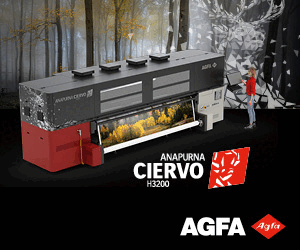Authored by Dennis Leblanc, Senior Business Development Manager at Drytac.

Find more Eye on Display articles about Drytac here.
Cold-weather installations
Print service providers that produce and install outdoor applications are all-too aware of the challenges that come with this line of work. No matter the season, pieces placed outside will be constantly subject to the elements, be it the harshness of winter or the warm sun of summer.
Winter in particular can cause headaches for print companies around the world, even if the mercury does not drop too low during their colder months. There are several factors that print service providers should take into account when installing work during winter. However, at the same time, there are also some simple, yet effective, steps they can take to mitigate any risks with cold-weather installations.
Critically important to any job, be it in cold or warm weather, is the material you are working with. Traditionally, pressure-sensitive print media has a minimum application temperature of 5˚C (41˚F) – which will immediately ring alarm bells for those working in regions where winter temperatures fall well below this point.

For this reason, printers should be looking at alternative solutions to ensure their winter projects are a success. Drytac has a selection of solutions that are cold weather installation-rated down to as cold as -20˚C (-4˚F).
In particular, many products within the Polar portfolio are designed to cope with lower temperatures. This applies to the entire process spanning installation, the life of the graphic, and finally its removal after reaching the end of its life.
Speaking of temperatures, it is also important to keep materials at room temperature until the time of installation in colder weather applications. This avoids materials becoming brittle and more difficult to work with.
One company that can attest to the quality of Polar is Edmonton-based Pivotal Signs & Imaging, which last winter used Drytac Polar Grip white polymeric self-adhesive vinyl to produce outdoor floor graphics for WestJet Airlines at the 2023 National Hockey League Heritage Classic.
The game took place at the end of October at Commonwealth Stadium in Edmonton, a location where during the winter months, temperatures can fall as low as -14˚C. However, by working with the Drytac solution, Pivotal Signs & Imaging, and indeed its client, were safe in the knowledge that the outdoor graphics would perform well despite the plunging temperatures.
The key takeaway here is to plan ahead; do not assume that the materials you use for installations in the warmer months will perform the same during the harshness of winter.

















